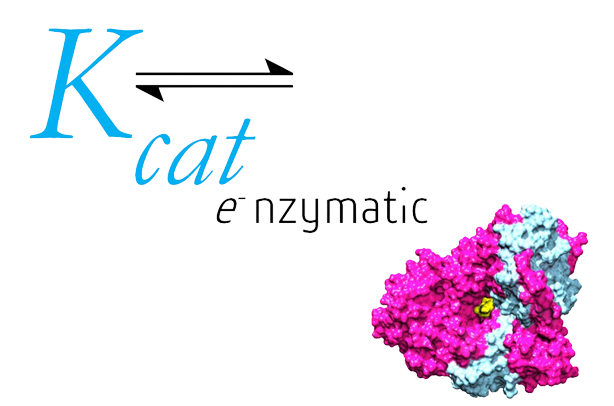We’re excited to announce our latest publication in Nature Scientific Reports on proteins with double active sites, which could revolutionize enzyme design strategies. We have developed an AI-based tool which creates enzymes with multiple active sites, enhancing their functionality by incorporating diverse catalytic activities. For example, a transaminase enzyme can now also facilitate hydrolysis reactions....
HomeCategory
Publications
Chlorogenic acids (CHLs) are known to competitively bind to translocase-I (T1) of the glucose-6-phosphatase (G6 Pase) system, thereby inhibiting the transport of glucose-6-phosphate (G6P). This competitive binding results in a consequential reduction in blood sugar levels. In this study, steered molecular dynamics (SMD) simulation is employed to investigate the interaction between T1 and G6P, aiming...
The enzyme m1A22-tRNA methyltransferase (TrmK) from Staphylococcus aureus catalyzes the transfer of a methyl group to the N1 of adenine 22 in bacterial tRNAs. TrmK is essential for S. aureus survival during infection, but has no homolog in mammals, making it a promising target for antibiotic development. Highlights Molecular dynamics simulations point to specific motions...
A novel method to predict stereospecificity of Transaminases using spatial arrangement of residues in the active site and algorithm to predict ee% of transaminases for any given substrate. The study provides information on the molecular basis for engineering enzyme’s stereospecificity and a screening tool to derive focused libraries. (Under Review)
Phenyl Ammonia Lyase (PAL) has garnered significant attention as the active ingredient in Pegvaliase, the only FDA-approved drug for treating classical phenylketonuria (PKU). Highlights: Deep Mutational scanning (DMS) to derive functional hotspots Hybrid QM/MM techniques combined with meta-dynamics on all 4 active sites of the PAL tetramer simultaneously, to enhance the sampling of coordinates relevant to...
In this study, we have conducted in-depth modelling studies, extended molecular dynamics experiments, and quantum chemical calculations to throw light on the structure-function relationship and its mechanism of enzyme action. A novel finding on second hydrogen abstraction in the C-22 desaturase mechanism was delineated. Read More: https://doi.org/10.1016/j.cattod.2021.12.004
Scaling up is a problem that a lot of biotechnologists find difficult, in terms of manufacturing techniques and products; that’s where we provide biocatalytic solutions at Kcat! The above schema is an intermediary reaction in the Plumbagin Biosynthetic Pathway. We at Kcat have identified two critical steps and respective enzymes in the synthesis of Plumbagin,...
For more information, refer to https://doi.org/10.1021/acscatal.8b03900
Screening and selection tools to obtain focused libraries play a key role in successfully engineering enzymes of desired qualities. The quality of screening depends on efficient assays; however, a focused library generated with a priori information plays a major role in effectively identifying the right enzyme. As a proof of concept, for the first time,...
Mechanical understanding of the correlation between actin assembly and ATP hydrolysis has been an object of intensive studies in biochemistry and structural biology. Azadirachtin(A) (AZA), a potential insecticide from neem, binds to actin and induces depolymerization in Drosophila. AZA binds to the pocket the same as that of Latrunculin A (LAT), but LAT inhibits actin...










